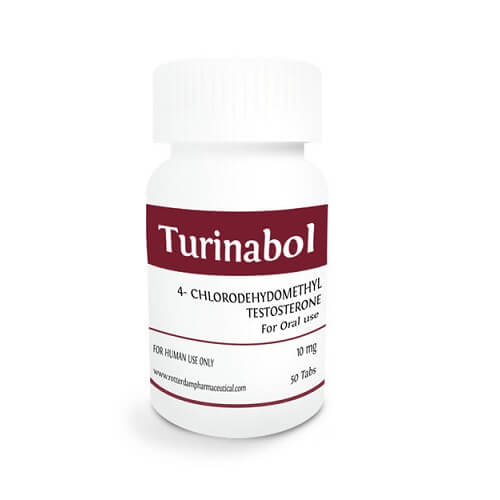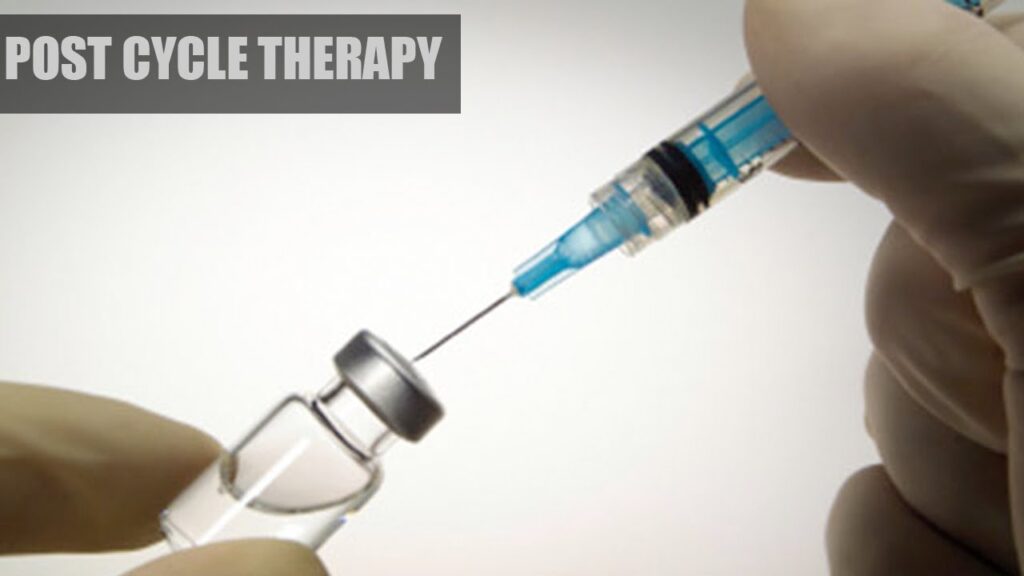Turinabol, chemically known as Chlorodehydromethyltestosterone, is an anabolic steroid initially developed for the purpose of enhancing performance. It gained notoriety in the 1960s and was instrumental in the systemic doping program of East German athletes, which led to its infamy. As with many anabolic steroids, Turinabol offers benefits such as increased muscle mass and improved athletic performance, but it is illegal without a prescription and carries significant health risks.
Turinabol Side Effects are numerous and can impact users in both the short and long term. These include liver toxicity, suppressed natural testosterone production, negative cardiovascular effects, and potential for virilization in female users. The severity of these side effects can vary based on the dosage and the duration of use. Knowledge of the side effects is crucial for individuals considering the use of Turinabol, regardless of the perceived benefits.
Quick Summary
- Turinabol is an anabolic steroid with a history of use in sports for performance enhancement.
- Turinabol Side effects can include liver damage, hormonal imbalances, and cardiovascular risks.
- Awareness and understanding of risks are crucial for anyone considering or currently using Turinabol.
References
- National Center for Biotechnology Information (2021). PubChem Compound Summary for CID 9853, Chlorodehydromethyltestosterone. Retrieved March 18, 2024, from https://pubchem.ncbi.nlm.nih.gov/compound/Chlorodehydromethyltestosterone.
- Hoffman, J. R., & Ratamess, N. A. (2006). Medical Issues Associated with Anabolic Steroid Use: Are They Exaggerated? Journal of Sports Science and Medicine, 5(2), 182–193. Retrieved March 18, 2024, from https://www.ncbi.nlm.nih.gov/pmc/articles/PMC3827559/.
Turinabol Profile

Turinabol, chemically known as chlorodehydromethyltestosterone, is a synthetic anabolic-androgenic steroid (AAS). Structurally, it bears close resemblance to Dianabol (methandrostenolone), but it incorporates a chlorine atom at the carbon 4 position. Unlike other AAS such as Anavar and Clostebol, Turinabol is known for its distinct absence of estrogenic effects, due to the chlorine substitution which prevents aromatization.
The chemical structure enables Turinabol to display an anabolic to androgenic ratio that is favorable for muscle building with reduced androgenic side effects. Its anabolic properties are less than those of testosterone, making it a mild steroid. Turinabol binds weakly to the sex hormone-binding globulin (SHBG), leading to more free steroid in the bloodstream and an increase in its effectiveness.
As a C17-alpha alkylated oral steroid, it has the potential to be liver toxic. This modification allows it to survive first-pass liver metabolism when ingested orally, making it bioavailable to exert its effects on muscle tissue growth and performance enhancement. However, this also puts a strain on the liver and increases the risk of liver damage over time.
Turinabol impacts lipid profiles, particularly cholesterol levels, hence long-term use or high doses can lead to cardiovascular concerns. The steroid operates by enhancing protein synthesis and nitrogen retention in muscle cells, facilitating an environment conducive to muscle growth, strength gains, and recovery.
References
National Center for Biotechnology Information. “PubChem Compound Summary for CID 9852, Chlorodehydromethyltestosterone” PubChem
Positive Effects and Advantages

Turinabol, known scientifically as Chlorodehydromethyltestosterone, typically garners attention for its notable influence on athletic performance and muscle development. Users often leverage this synthetic anabolic-androgenic steroid for its potential to enhance strength and augment lean muscle mass, alongside other performance-centric benefits.
Enhanced Athletic Performance
Turinabol is frequently associated with a marked improvement in overall athletic ability. Evidence suggests that it can significantly boost endurance and performance enhancement during intense physical activities. Key attributes include:
- Increased Strength: Aids in enhancing the user’s power and lifting capabilities.
- Improved Endurance: Users may experience heightened stamina, allowing for more rigorous and prolonged training sessions.
Recovery times may also be minimized, permitting athletes to train more frequently with reduced downtime.
Muscle Gains and Preservation
With regard to muscle development, Turinabol has two main benefits:
- Muscle Gains: Promotes mass gain and contributes to the development of lean muscle, without excessive water retention.
- Muscle Preservation: It can aid in sustaining muscle tissue during periods of caloric deficit, which can be useful during cutting phases to minimize fat loss while protecting muscle integrity.
This compound is also associated with facilitating protein synthesis, which is a vital process for muscle repair and growth post-exercise.
Turinabol Side Effects and Risks

Turinabol, an anabolic steroid, carries several health risks and side effects that users need to be aware of. These pitfalls are broadly categorized into androgenic and estrogenic complications, cardiovascular health impacts, and potential internal concerns, especially relating to liver health.
Androgenic and Estrogenic Complications
Turinabol Side Effects can lead to both androgenic and estrogenic due to its chemical nature. Androgenic side effects may comprise:
- Acne: The stimulation of sebaceous glands can result in acne flare-ups.
- Virilization: This includes symptoms like body hair growth and deepening of the voice, especially in female users.
Estrogenic side effects can occur even though Turinabol is less estrogenic than other steroids:
- Gynecomastia: The development of breast tissue in men.
- Water retention: Leading to increased blood pressure and a bloated appearance.
Impact on Cardiovascular Health
The use of Turinabol can profoundly affect cardiovascular health:
- Cholesterol Levels: Anabolic steroids may increase LDL (“bad” cholesterol) and decrease HDL (“good” cholesterol), heightening the risk of arteriosclerosis.
- Heart Disease: An imbalance in cholesterol levels correlates with an enhanced risk of heart conditions.
Liver Toxicity and Other Internal Concerns
Anabolic steroids like Turinabol are hepatotoxic, which means they can cause liver damage:
- Liver Toxicity: Sustained use may result in liver strain or more serious conditions such as liver failure.
- Other Internal Concerns: Prolonged exposure can also affect other organs and internal systems.
References
- National Library of Medicine – Anabolic Steroids and Cardiovascular Risk
- National Library of Medicine – Androgenic Anabolic Steroid Abuse and the Cardiovascular System
- National Library of Medicine – Hepatotoxicity by Dietary Supplements: A Tabular Listing and Clinical Characteristics
- National Library of Medicine – Anabolic Steroid-Induced Hepatotoxicity: Is It Overstated?
Post Cycle Therapy and Recovery

After the cessation of Turinabol, Post Cycle Therapy (PCT) is critical for restoring natural testosterone levels. PCT involves using specific medications to help accelerate the recovery of natural hormonal function. Nolvadex (tamoxifen citrate) and hCG (human chorionic gonadotropin) are commonly utilized in this phase.
Nolvadex functions as a Selective Estrogen Receptor Modulator (SERM). During PCT, it is often taken to prevent estrogen-related side effects and to stimulate the release of Gonadotropin-releasing hormone (GnRH) which in turn promotes the production of luteinizing hormone (LH) and follicle-stimulating hormone (FSH). This ultimately helps in elevating testosterone levels. A typical dosage might begin at 40 mg per day for the first two weeks and drop to 20 mg per day for the final two weeks of a four-week PCT.
| Week | Nolvadex Daily Dosage |
|---|---|
| 1-2 | 40 mg |
| 3-4 | 20 mg |
hCG is another component often introduced before SERMs like Nolvadex during PCT. It mimics LH and can rapidly stimulate the testes to produce testosterone. However, its usage must be carefully timed and dosed to avoid desensitizing the testicular Leydig cells.
Boldenone use without proper PCT can lead to prolonged suppression of natural testosterone production. Therefore, anticipating a strategic PCT protocol is important for full recovery.
- Start hCG before SERMs
- Gradually taper off hCG
- Transition to SERMs for continued recovery
Recovery time varies from person to person, but it typically takes several weeks to several months for testosterone levels to return to baseline. It is imperative to ensure that PCT is tailored to the individual’s needs and to follow the guidance of a healthcare provider.
Frequently Asked Questions

This section addresses common concerns about the Turinabol side effects and provides insight into its impact on health.
What are the common Turinabol Side Effects?
Oral Turinabol can lead to side effects such as liver damage, suppression of testosterone production, and cardiovascular issues. These adverse effects are significant considerations for users.
How does Turinabol impact liver health?
Turinabol can cause hepatotoxicity, which is a form of liver damage. Prolonged use or high doses increase the risk of liver complications, including liver tumors and blood-filled cysts in the liver.
Can Turinabol usage lead to a decrease in testosterone levels?
Yes, Turinabol can suppress natural testosterone production, resulting in decreased levels of this hormone in the body. Post-cycle therapy is often necessary to help restore natural testosterone production.
What is the typical duration for Turinabol to show effects?
The onset of effects from Turinabol varies, but users typically report seeing physical changes within 3 to 6 weeks into their cycle. Dosage and individual response play a role in this timeline.
What are the differences in side effects between Turinabol and Anavar?
Turinabol and Anavar are both oral steroids, but Turinabol is generally considered more hepatotoxic. Anavar is often seen as milder, with a lower risk of liver damage and other side effects.
What should be considered before starting a Turinabol cycle?
Individuals should consider the potential risks, including hormonal imbalance, liver damage, and cardiovascular issues. Consulting a healthcare professional beforehand is crucial for safety.
References
- LiverTox: Clinical and Research Information on Drug-Induced Liver Injury – National Institute of Diabetes and Digestive and Kidney Diseases
- Suppression of Endogenous Testosterone Production and Sperm Function by a Novel Orally Active Selective Androgen Receptor Modulator – PubMed
- Anabolic Androgens and Testosterone in Sports and Health – ResearchGate
Dr. Grant Fourie, a specialist in male hormones, is based in Cape Town, South Africa. He provides comprehensive treatments for conditions related to low testosterone, such as erectile dysfunction, fatigue, and mood changes. His methods include hormone replacement therapy and other modern treatment options.
Contact me via email or phone to book personal appointment in my clinic: The Village Square, Cape Town - South Africa



